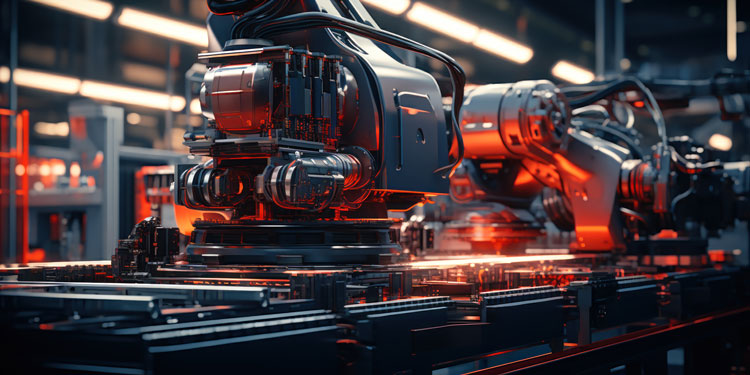The machining and automation industry is undergoing a transformative phase globally, driven by technological advancements, economic shifts, and sustainability initiatives. Across various countries and industries, companies are adopting smart manufacturing techniques, integrating AI-driven automation, and enhancing precision machining to stay competitive. This feature explores the latest trends in machining and automation with key statistics highlighting industry-wise and countrywide progress.
Global Market Trends in Machining & Automation
Recent market research indicates that the global CNC machining market was valued at approximately USD 67.5 billion in the past and is expected to grow at a CAGR of 6.5% from 2024 to 2030. Similarly, the industrial automation sector, encompassing robotics and AI-driven processes, is projected to reach USD 265 billion by 2027. Here are some key trends shaping the industry worldwide:
- Adoption of AI & IoT: Over 75% of large-scale manufacturers are investing in AI-driven predictive maintenance and IoT-enabled machinery.
- Sustainability & Green Manufacturing: More than 60% of machining firms are integrating energy-efficient CNC machines to reduce carbon emissions.
- Reshoring & Regional Manufacturing Growth: Countries like the U.S., India, and Germany are witnessing a surge in reshoring efforts to reduce reliance on global supply chains.
- Workforce Automation & Cobots: Collaborative robots (cobots) are increasingly being used, with the global cobot market expected to exceed USD 8 billion by 2030.

Country-Specific Trends
United States
The U.S. machining and automation industry is witnessing significant investments in digital transformation. In 2024, around 85% of American manufacturers plan to increase their automation budgets, particularly in aerospace, automotive, and medical device manufacturing. The U.S. government’s CHIPS Act has further boosted semiconductor machining investments, leading to a projected 12% annual growth in precision machining for electronic components.
Germany
Germany remains a leader in Industry 4.0, with over 80% of its manufacturing firms integrating smart factories. The German automotive sector, which contributes nearly 50% of machining demand, is rapidly transitioning toward electric vehicle (EV) component production, requiring high-precision automation. Additionally, Germany’s export of machining tools grew by 9% in the past, driven by global demand for high-quality precision parts.
China
China continues to dominate the global CNC and industrial automation market, accounting for over 30% of total production. With significant government-backed initiatives like “Made in China 2025,” the country is accelerating advancements in robotics and AI-integrated machining. Over 90% of Chinese factories now incorporate some level of automation, with a focus on smart robotics in consumer electronics and medical equipment manufacturing.
India
India’s machining sector is experiencing rapid growth, particularly in automotive and aerospace applications. The Indian CNC market was valued at USD 3.5 billion in past years and is expected to grow at a CAGR of 7.2% through 2030. With government initiatives like “Make in India” and the Production-Linked Incentive (PLI) scheme, companies are investing heavily in automation and precision machining technologies. The robotics sector in India is also expanding, with industrial robot adoption growing at 15% annually.
Japan
Japan continues to lead in high-precision machining and robotics innovation. The country’s investment in industrial robots increased by 18% in past years, with a focus on AI-driven automation in semiconductor and medical device manufacturing. Over 65% of Japanese manufacturers have adopted smart machining solutions, improving efficiency and reducing operational costs.
Industry-Wise Breakdown
Automotive Industry
The automotive sector remains one of the largest consumers of machining and automation solutions. With the rise of EVs, there is a growing demand for lightweight materials and high-precision machining for battery components. In 2024, 70% of automotive manufacturers plan to increase their automation investments, particularly in AI-driven quality control and autonomous production lines.
Aerospace & Defense
Aerospace machining requires extreme precision, and automation is playing a crucial role in reducing errors and enhancing productivity. The global aerospace machining market is projected to grow at a CAGR of 6.8%, driven by increased aircraft production and defense modernization programs. Countries like the U.S. and France are leading in AI-integrated CNC machining for critical aerospace components.
Medical Device Manufacturing
The medical machining industry is rapidly evolving, with AI-powered precision machining and additive manufacturing (3D printing) revolutionizing production. In 2024, over 60% of medical device manufacturers are expected to adopt automation for enhanced accuracy and faster production cycles. The demand for custom implants and minimally invasive surgical instruments is also fueling growth in CNC machining.
Electronics & Semiconductor Manufacturing
With the global semiconductor industry poised to reach USD 1 trillion by 2030, precision machining for semiconductor fabrication is experiencing significant investments. The U.S., China, and Taiwan are investing heavily in automation for chip manufacturing, with cleanroom robotics and AI-driven defect detection becoming standard practices.
Heavy Engineering & Infrastructure
Heavy engineering and infrastructure projects require robust machining solutions for manufacturing large components. The sector is increasingly adopting hybrid machining techniques, combining additive and subtractive manufacturing. Countries like India and Brazil are witnessing a surge in smart machining investments for railway and construction equipment production.
The Future of Machining & Automation
The next decade will see an acceleration in AI-driven machining, digital twins, and autonomous manufacturing units. Sustainability will also be a key focus, with manufacturers adopting eco-friendly machining fluids, energy-efficient CNC systems, and circular economy principles. The integration of quantum computing in machining simulations is also on the horizon, promising groundbreaking improvements in material processing and precision engineering.
Key Predictions for 2025-2030
- AI-driven machining will account for over 50% of global CNC operations.
- Industrial automation will reduce manual labor dependency by 30% in major economies.
- 3D printing and hybrid manufacturing will gain a 25% share in precision engineering.
- Global investment in robotics will exceed USD 500 billion by 2030.
The machining and automation industry is at the forefront of the Fourth Industrial Revolution, with innovations reshaping manufacturing across industries and countries. As AI, robotics, and sustainability continue to drive change, businesses must adapt to these evolving trends to maintain a competitive edge. With significant advancements expected in the coming years, the future of machining and automation promises unparalleled efficiency, precision, and sustainability.



